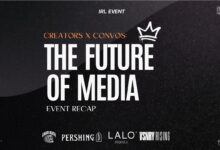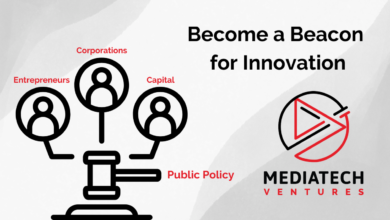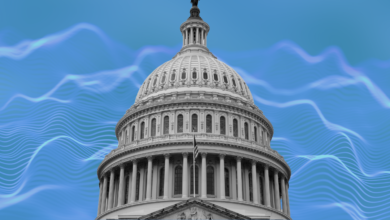
In October 2021 former president Donald Trump announced plans to launch Truth Social, a new social media platform very popularly discussed and debated by traditional media and politically oriented people. “Galvanizing a conservative media universe,” he described this forthcoming network in his pitch deck as such, begging curiosity of if and why media plays a distinct and important role in partisan contexts. The former President’s response to getting banned from major social media networks coupled with his claims of fake news is to create a social media platform that embodies the values and policies of his work and community. Interestingly and quickly overlooked, Truth Social comes on the heels of the launched and quickly shutter Donald Trump blog, as well as hype for Parler, Gab, and other “conservative” social media efforts.
Presidential communication has advanced since the time of newspaper, radio, and televised press conferences to now social media. In Donald Trump’s case, social media played a major role in his rise, as it did too for Barack Obama, given his campaign’s sophisticated use of social media.
U.S. Presidents and Media Technology
In media, we struggle with the never ending challenge of Media Literacy and the balancing of human rights in communication and influence. That is for example, what rights do people have to decide how they use their property in communicating information? Can people use that property to communicate fictions or “fake news”? Fake news is not only a sensationalized notion in politics, it’s a very real and valid form of media evident in The National Enquirer, The Onion, Babylon Bee, or Saturday Night Live and The Daily Show’s commentary on News. Where is the line drawn wherein a person and their company certainly has the right to say whatever they want when it also opens up society to the implications of lies, misunderstanding, fictions, and bias.
What is Media Literacy?
Media literacy consists of practices that allow people to access, critically evaluate, and create or manipulate media. Media literacy is not restricted to one medium. Media literacy education is intended to promote awareness of media influence and create an active stance towards both consuming and creating media.
Media companies such as Twitter, are private entities where YOU are the publisher; enabling unfettered content with which we might only expect that they have a right to delete or ban whomever violates their terms and conditions. On the other hand, a Media company such as News Corp or Hearst, also private companies, determines what is published; shifting the responsibilities and rights to consider. And indeed, President Trump was removed from many platforms where “social media” companies rightly decided they didn’t want to host his voice any longer; while traditional News media certainly still publishes news about Donald Trump, that news being at their discretion and with their voice.
After losing public access to his followers on social media platforms, and having an extraordinarily strained relationship with the press, it’s not unreasonable for entrepreneurs to appreciate that Donald Trump is attempting what Donald Trump can and frankly, arguably even should, do; creating his very own platform.
I shared this thought with Quora when asked, Why is Trump competing with Facebook and other social media tech companies, and who supplies the money?
“The free market means such sites can compete. That they should compete. And that the government is considering this stuff and getting involved, the best counter move he can make is to stand up a company of his own, a private company too, and start fighting with that government about private property rights, free speech, etc.”
It’s not exactly groundbreaking news within American history for a president to go to heads with the media. We dug a little deeper into history to understand the complicated relationship between presidents and the media. Here’s what we found. Thomas Jefferson, Theodore Roosevelt, Woodrow Wilson, Harry S. Truman, Richard Nixon, George W. Bush, and Bill Clinton have all had a strenuous relationship with journalists, the press, and the media.
“It is very important in terms of the final campaign that the media be effectively discredited.”
President Richard Nixon
One of America’s Presidents distrustful of the media, Nixon, lost his presidency because of the Watergate scandal in which Washington Post reporters Bob Woodward and Carl Bernstein revealed his role in a wire tapping conspiracy. Already at a crossroads with “the media” prior to Watergate, his hasty exit unfolded immediately as a result and he left a legacy felt today, “Forty years after Watergate, presidential suspicion of reporters and attempts to keep the press at arm’s length remain high,” Jon Marshall with The Atlantic.
Throughout those subsequent years of distrust, it’s easy (too easy) to think that the President who curried your favor did everything right while the other did everything wrong, and while many perceive Donald Trump as being the first massive adopter of social media, it was really his predecessor who recognized the shift in public attention from traditional media to social media.
From Stanford Business Professors’, Jennifer Aaker and Victoria Chang, Obama and the Power of Social Media and Technology…
“Many factors contributed to his success, but a major one was the way Obama and his Chicago-based campaign team used social media and technology as an integral part of their campaign strategy, not only to raise money, but also more importantly, to develop a groundswell of empowered volunteers who felt that they could make a difference.”
And too, well before Obama & Trump, well before even Watergate and Nixon’s legacy with the Media, political candidates and people seeking that seat in the Oval Office, have recognized the critical importance of the Media (very often wielding it in unfortunate ways). The bad behavior didn’t start with Facebook nor recent President’s use of the medium, but easily as far back as the late 1800s, when it wasn’t some social media biasing or influencing us while failing to “police” the voice of those we don’t like; it was that trusted News Media working hand in hand in Politics.

At the Circus in Hogan’s Alley
New York World
Yellow journalism was a style of newspaper reporting that emphasized sensationalism over facts (sound familiar?). During its heyday, in the late 19th century, competition over the New York City newspaper market fueled an overblown tone similar to what we experienced with Donald Trump’s use of Twitter. In this case though, major newspaper publishers Joseph Pulitzer and William Randolph Hearst stoked the flames (keep in mind, well before “social media” could be considered the blame). Yellow journalism, in name derived, from a popular cartoon strip about life in New York’s poverty stricken neighborhoods, called Hogan’s Alley, drawn by Richard F. Outcault. Published in color by Pulitzer’s New York World, the comic’s most well-known character came to be known as the Yellow Kid, and his popularity accounted in no small part for a tremendous increase in sales for Pulitzer. In 1896, in Heart’s reaction boost sales of the New York Journal, Hearst hired Outcault away from Pulitzer, launching a fierce bidding war for his talent. Hearst ultimately won. Pulitzer refused to give in and hired a new cartoonist to continue drawing the cartoon for his paper. This battle over the Yellow Kid and a greater market share gave rise to the term yellow journalism.
Influential figures such as one Theodore Roosevelt led a drive for U.S. overseas expansion that had been gaining strength since the 1880s. Hearst was often quoted at the time saying — “You furnish the pictures, I’ll provide the war!” so while the two competitors fueled anti-Spanish public opinion which, warranted or not, helping justify the Spanish-American War, yellow journalism (early “fake news”) stoked not just sales but war, and a President into the Oval Office.
Claiming Truth Through Mass Communication / Media
Claiming truth, through any medium, is a thorny and tangled topic. One must first wonder: who’s truth? Trump’s truth certainly varied from the mainstream media’s truth. Nixon’s truth was different from the journalists who uncovered his secretive communications. For decades longer, centuries even I’m sure, the News Media has spun a narrative intertwined with the objectives of those in office. Who is right and wrong is a different discussion in itself. From a media technology perspective, media and technology have their own dark side: transparency, manipulation, and censorship come into play with truth-seeking and truth-hiding when/as the media is open to everyone and anyone to use; by the same token though, were we really better off when very few were deciding what we read and heard?
There is never a moment that media or technology is not evolving. Share your thoughts about people in power and their relationship to the media in the comment section or start a conversation in our community.







I’m a conservative, and I’ve got to say… no one on my side is talking about Trump. It is very weird to me that people are still trying to make him the center of discussion.
DeSantis is probably the guy in 2024.
That said Twitter banned investigative journalism and has opened themselves up to be flanked.
Sorry last edit, once Truth social drops, if it isn’t a rubbish UX it’s going to have some sea legs.
Great points. Like I said, not getting in to the sides of the political aisle, I tried to keep my look at the history, neutral.
Your points about Twitter are solid though. They’ve been making product changes that seemed sound and wise, compared to Facebook (newsletters, voice, and rumors of NFTs) but then their politically oriented choices seem flippant and neither neutral nor consistent.
And yes, frankly, IF Truth Social is capably built (I’m not holding out confidence that it will be, previous similar endeavors have been pretty basic or outdated), then it certainly will have legs. Conservative (and Liberal) Media absolutely has its market – evident in radio, TV news, and print.
Paul O’Brien gab is horribly designed , MeWe isn’t very good, rumble is getting better, parler remains hard to use, 1000% it’s not a market issue it’s an execution issue.
Really hadn’t hit me
Well, this just happened:
[Donald Trump’s Media & Tech Company Facing SEC Investigation](https://www.hollywoodreporter.com/business/business-news/donald-trump-media-tech-sec-investigation-1235057590/)
*The disclosure of the investigation follows the announcement that the SPAC Trump’s TMTG plans to merge with has raised an additional $1B in PIPE financing*.
Sorry I’m late to this party, Paul. Thanks for offering a balanced view of what’s going on. With respect to the SEC investigation, it’s hardly a shocker, given that agencies have tended to be subverted and used to attack political opponents over the past decade. I have no special knowledge iaboun this case, but it came to mind quickly, given abuses over the last decade.
Keep up the good work!
Cheers Bob. Happy new year!